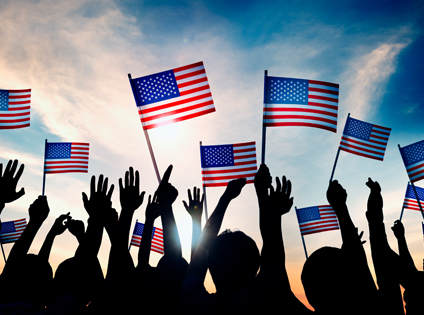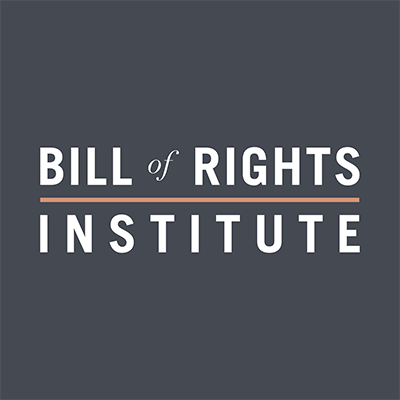Teaching the Election Results Is a Shared Responsibility
Congratulations, America, it’s Election Day! If you’re like a majority of Americans, you are elated that this one is almost over.

Share
November 7, 2016
Congratulations, America, it’s Election Day! If you’re like a majority of Americans, you are elated that this one is almost over.
Share
By Dr. David Bobb
Congratulations, America, it’s Election Day! If you’re like a majority of Americans, you are elated that this one is almost over.
And if you’re a teacher (and not just a social studies or history teacher), you now face the daunting task tomorrow of talking about the results, and what they mean to young people.
For some teachers and students, election talk ended a while ago. For the rest of us trying to present the presidential race in an age-appropriate way, it has proven to be among the most difficult tasks of recent political and pedagogical memory.
Here are a few ideas for post-election wrap-up that will challenge your students to be thoughtful, civil, and forward-looking, even if the election cycle was not:
1. Set the tone by emphasizing what it means for “We the People” to vote. In 2004 I was part of an American delegation that traveled to Iraq to work with their national K-12 leadership team. Sponsored in part by the American Federation of Teachers, the delegation was tasked with pursuing a dialogue that could help rebuild Iraqi civil society in the wake of Saddam Hussein’s ouster.
I will never forget the exchange I had with one Iraqi citizen, a veteran of the devastating Iran-Iraq War of the 1980s. He related that in the last election under Hussein, he was handed his ballot, which was already marked with a vote for the Iraqi dictator. There were no other names on the ballot. This citizen’s task, he related, was to insert the ballot into the ballot box.
Having fought for his country, the Iraqi man at that moment was not going to be made complicit in tyranny any more. Instead of doing as was expected, however, he handed the ballot back to the election worker. As he said of his feeling on that occasion, “For the first time, I felt like a human being.”
The sacred responsibilities of citizenship we have in the United States go much beyond voting, yet we must never forget what voting means. And even if your students aren’t 18 years old, they can come to know what voting means to those who are deprived of the right, whether in other nations, or in our own.
2. Make sure that you allow your students to voice their feelings, opinions, and ideas about the election results.
Real education is about ascending from opinion to knowledge, but in an election that has aroused strong feelings, it’s important for students to state what they’re thinking.
Whether in an all-school forum or a small group lunchtime conversation, if you listen to students you’re giving them a chance to gain their voice, which in turn builds the confidence they need to thoughtfully enter the debate. At the Bill of Rights Institute we’ve seen that happen throughout this election cycle at Think the Vote, where questions to the presidential candidates were posed by hundreds of students across the country.
3. If things get heated in your classroom conversations, don’t change the subject. Dive more deeply into what divides Americans about this election. Time permitting, discuss the fault lines and the fissures—the tectonic questions that too often we shunt aside until there’s an earthquake.
I know this is counter-intuitive advice. But it’s also the only way that we’re going to prepare young adults for better discourse than we demonstrated this election. If civility and respect are going to become habits of American discourse, we have to model those traits for students in the classroom.
Don’t get me wrong: it’s never okay to allow students to go on the attack. But if a student says, in effect, “I don’t know how I’m going to live with people that voted for Donald Trump,” or “I can’t imagine liking anyone who would vote for Hillary Clinton,” you have in that moment an opportunity to dig deeper rather than to declare the conversation at an end.
Students, like the general electorate, see national politics for the tribal warfare it has become. If you can moderate a discussion either today or in the future in which the students can focus on issues, character, and competency, you will go a long way to showing them that our politics don’t have to be tribal. At a grade appropriate level, ask the students to understand the many sides of a complex issue. For high school students, demand that they can articulate those differences.
4. Round out the discussion by noting that the peaceful transfer of power is the hallmark of the American democratic tradition, and that nothing that any politician says can erase our memory.
The story of the presidential election of 1800 should be mandatory reading for any elected official, or anyone aspiring to office in America. If you don’t know the story, seek it out.
Even though John Adams lost his bid for re-election to Thomas Jefferson, and even though he left Washington, D.C., before Jefferson’s inauguration, Adams and the Federalists did not mount a coup. In upholding the rule of law, early Americans accomplished the first peaceful transfer of political power from one party to the opposition in human history.
That, our students should know, is worth celebrating, even if much else in this campaign cycle is not.
David J. Bobb, Ph.D. joined the Bill of Rights Institute as president in late 2013. A network of more than 50,000 history, government, civics, and social studies teachers utilize resources published by the Institute, including “Documents of Freedom”, a digital textbook. David is the author of Humility: An Unlikely Biography of America’s Greatest Virtue and a contributing editor to The U.S. Constitution: A Reader. He has written articles for The Wall Street Journal, Fast Company, Washington Times, Boston Herald, and the Claremont Review of Books, among numerous other publications. David earned his Ph.D. in political science from Boston College, where he was the recipient of fellowships from Pew, Earhart, and Bradley Foundations, as well as the Intercollegiate Studies Institute.
